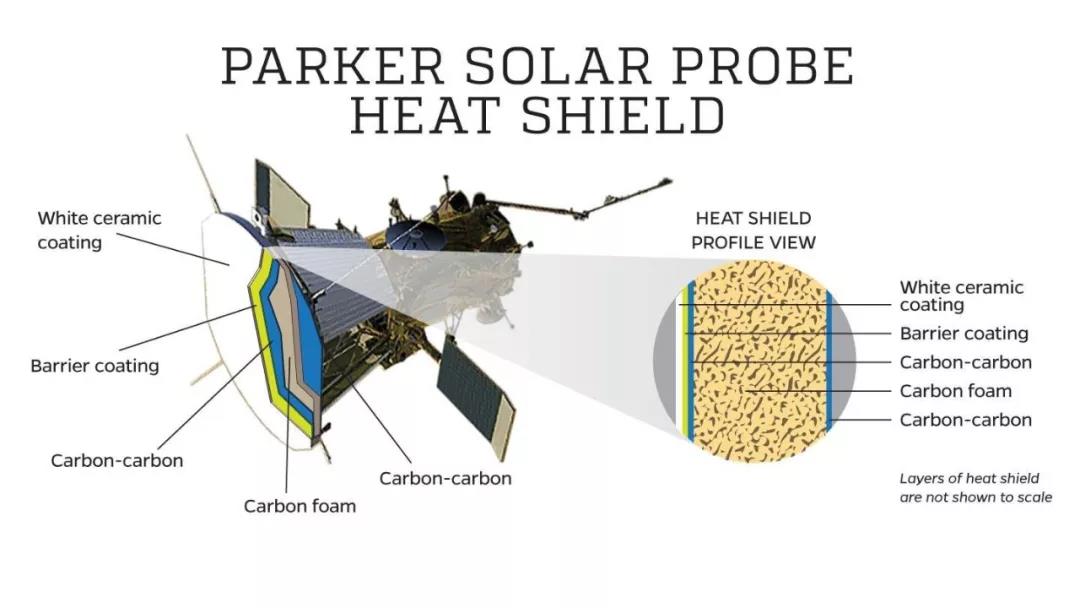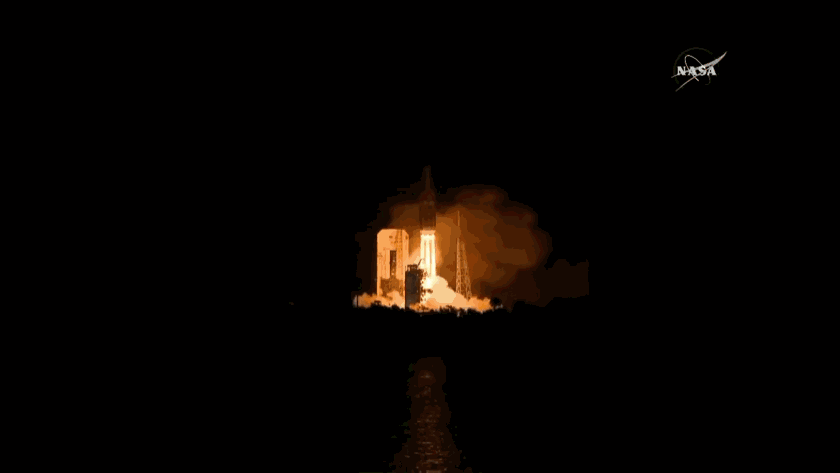Beijing time August 12 3:31 P.M., the Historic Park Sun detector (Parker Solar Probe) at Cape Canaveral Air Force Base slc-37b launch bit by Delta 4 heavy rockets launched. After a 43-minute flight, although the period experienced a third level of suspected loss of the thrilling moment, fortunately is the ultimate near misses, Parker detector successfully separated from the rocket, set foot on the long road to the sun, and thus opened the new journey of human exploration of the sun!
To create a world record to reach the nearest spot in the sun, people have to find materials that can withstand unprecedented levels of ultra-high temperatures. It can be said that if there is no thermal protection system (TPS), there is no Parker. According to the plan, Parker will enter 4 million miles from the sun's surface (6.11 million km). In order to adapt to this extremely hot environment, the detector will carry a composite heat shield, the dome will withstand the glare from the sun. The heat shield could not have been made 10 years ago.
If you're a 1 square metre satellite in Earth orbit, and the sun's energy is about 1350 watts to reach you, but Parker is about 25 times times closer than this position, which is about 850,000 watts of heat per square metre. If the area is counted, Parker's solar probe must withstand about 3 million watts of energy. The detector's heat shield is also known as the Thermal Protection system (TPS), consisting of two carbon-enhanced composite layers and a carbon foam with an intermediate clamp of about 4.5 inches (11.43cm). The heat shield facing the Sun also has a special white coating to reflect the energy from the sun as much as possible. This material is resistant to 2,500 degrees Fahrenheit (about 1371 ℃) and ensures that the instrument operates at about 85 degrees Fahrenheit (about 30 ℃).
"If this task was in the 60 's to the 70 's, even when deployed in the 80 's, it is possible to fly high heat-resistant metals," Driesman said. "Scientists will build a metal Jerdon with a very high melting point, but never send it to heaven, because the metal is too heavy. "Unlike most commercial carbon fibers, their carbon-carbon structure is not polymerized by hardening resins because hardened resins evaporate near the sun like oil on hot road surfaces," he said. To make the heat shield, NASA fills the resin with "chopped carbon fiber", then hardens the resin, bakes it in a 3,000-degree oven, and repeats the process 4 to 5 times. "Eventually you'll get the carbon fiber that's wrapped around you. The carbon-carbon structure we are talking about is pure carbon, free of resins and other substances. "The front and back sides of the thermal shield are made of this carbon-carbon plate, which, in addition to being insulated, has a very strong mechanical strength." 2 layers of carbon-carbon sheets are thin enough to bend and even overlap. In the middle of a two-layer carbon-carbon material, a layer of about 4.5 inches of carbon foam, which is now generally used in the medical industry to create alternative bones. The sandwich design props up the entire structure-like corrugated cardboard-which weighs just 160 pounds (about 73kg) for the entire 8-foot-thick heat shield.

Foam is also the most important structure of thermal shield insulation function. But 97% of the carbon bubble is air, in order to further reduce the weight of space probes. The carbon itself is thermally conductive, and the foam structure also means that there is not so much heat to be transmitted. Bubbles are not easy to test, they are extremely brittle. But there is another problem. "When they get hot, they burn." "said Abel. Burning is not a big problem in a vacuum, but the remaining air in the test will cause the bubbles to scorch into charcoal. Therefore, the National Oak Ridge Laboratory Engineers with high-temperature plasma arc lamps to test the heat shield of these carbon foam high temperature resistance. The thermal insulation of these carbon foams alone is not enough to guarantee that the detectors will work at the required temperature. Because there is no air dissipation in space, the only way to dissipate heat is to scatter light and emit heat in the form of photons. Therefore, another protective layer is needed: a white protective layer is used to reflect heat and light.

Parker Solar Detector thermal shield structure schematic diagram
To this end, the Applied Physics Laboratory at Johns Hopkins University and the Advanced Technology Laboratory of the Whiting School of Engineering (Advanced Technology Laboratory in Johns Hopkins University ' s whiting School Engineering) has formed a team of expert teams of thermal insulating coating super luxury teams, with team research coverage of high-temperature ceramics, chemical and plasma spraying coatings. Through further testing, the team eventually chose the white layer of protection based on alumina. But the protective layer would be grayed out in a high temperature environment with a carbon reaction, so engineers added a layer of tungsten to the middle, thinner than the hair, and coated in between the heat shield and the white shield to prevent interaction between the two layers. They also add a nano-doping agent to make the shields whiter and prevent the thermal expansion of the alumina particles. Dennis Nagle, chief research engineer at the Center for Systems Science and engineering, said that usually when using ceramics, a rigid, porous coating is preferred, but the material breaks when hit with a hammer. At the temperature the Parker faces, the smooth coating breaks like a stone-hit window. Therefore, even porous coatings can withstand this extreme environment. When cracks occur in porous coatings, the cracks stop when they reach the pores. The coating consists of several coarse granular layers-enough to allow a group of ceramic particles to reflect the missing light from another layer.
Post time: Aug-15-2018

